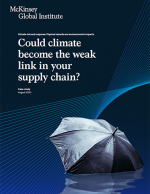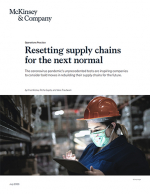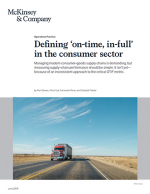Parcel Delivery: The Future of Last Mile
Currently subject to significant disruption, last-mile delivery, especially of parcels, is getting a great deal of attention in the media and from investors, and rightfully so.
The cost of global parcel delivery, excluding pickup, line-haul, and sorting, amounts to ~ EUR 70 billion, with China, Germany, and the United States accounting for more than 40 percent of the market.
However, the market is not just large, it is also highly dynamic, with growth rates in 2015 ranging between 7 and 10 percent in mature markets, such as Germany or the US, and almost 300 percent in developing markets such as India.
This means that, in mature markets, volumes could double over the next ten years, reaching roughly 5 billion and 25 billion parcels per year in Germany and the US respectively.
The largest driver of this growth is not surprisingly e-commerce, which has shifted market share from the B2B to the B2C segment.
B2C once made up ~ 40 percent of the market, but has since exceeded 50 percent in a number of countries, including Germany.
In addition, the last mile’s hefty share in total parcel delivery cost – often reaching or even exceeding 50 percent – makes it a key process step for those seeking to gain a competitive advantage.
At the same time, it is precisely at the last mile that many incumbents are struggling, as they often shoulder significant labor cost disadvantages and therefore, all else being equal, competitive disadvantages.
Size, growth, and the difficult positioning of incumbents alone already provide ample grounds for studying the future development of the last mile.
But there is one more critical factor supporting the case for taking a closer look: the last mile is seeing disruption from new business models that address customer demand for ever faster delivery, as well as new technologies that are likely to reach market readiness over the next ten years, including drones and autonomous ground vehicles (AGVs).
Before we jump into the details of our vision of the last mile, we would like to first summarize the three key hypotheses that we later develop and discuss in the remainder of this document.
1. A growing group of consumers desires faster home delivery, yet most remain highly price sensitive
2. Get ready for a world where autonomous vehicles deliver 80 percent of parcels
3. This vision will become reality within the next ten years
What’s Related




Favorites





